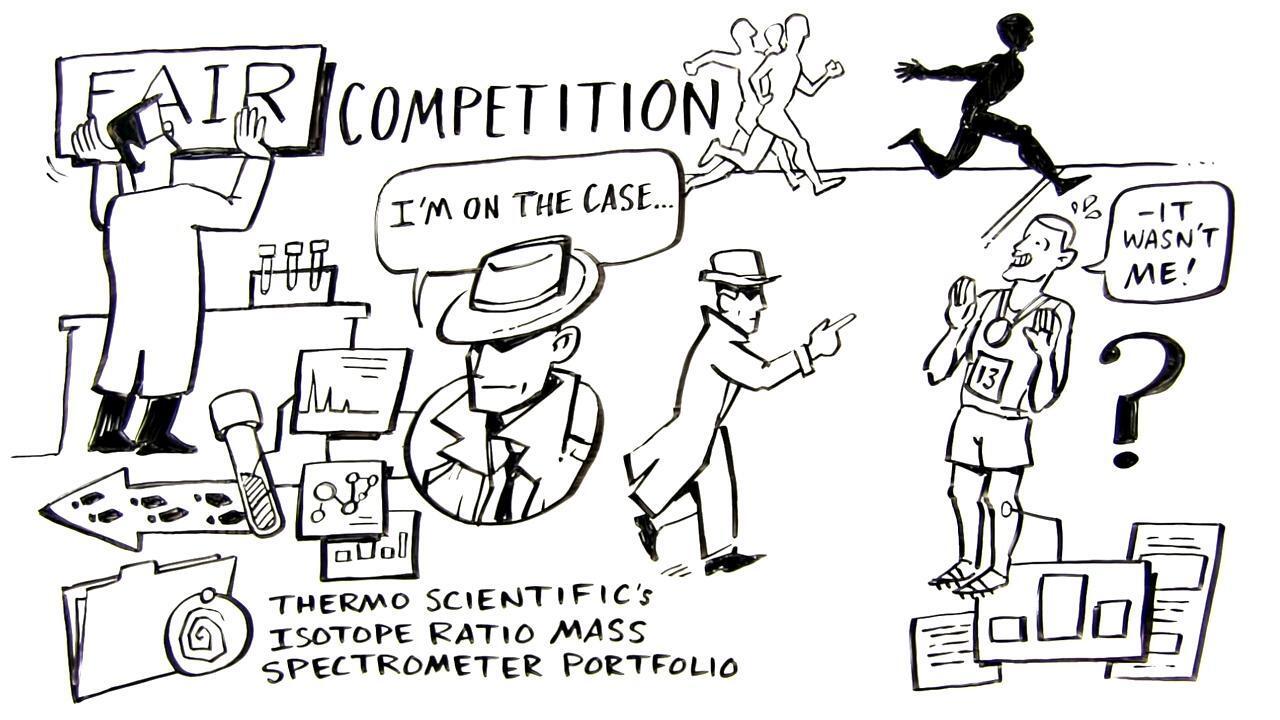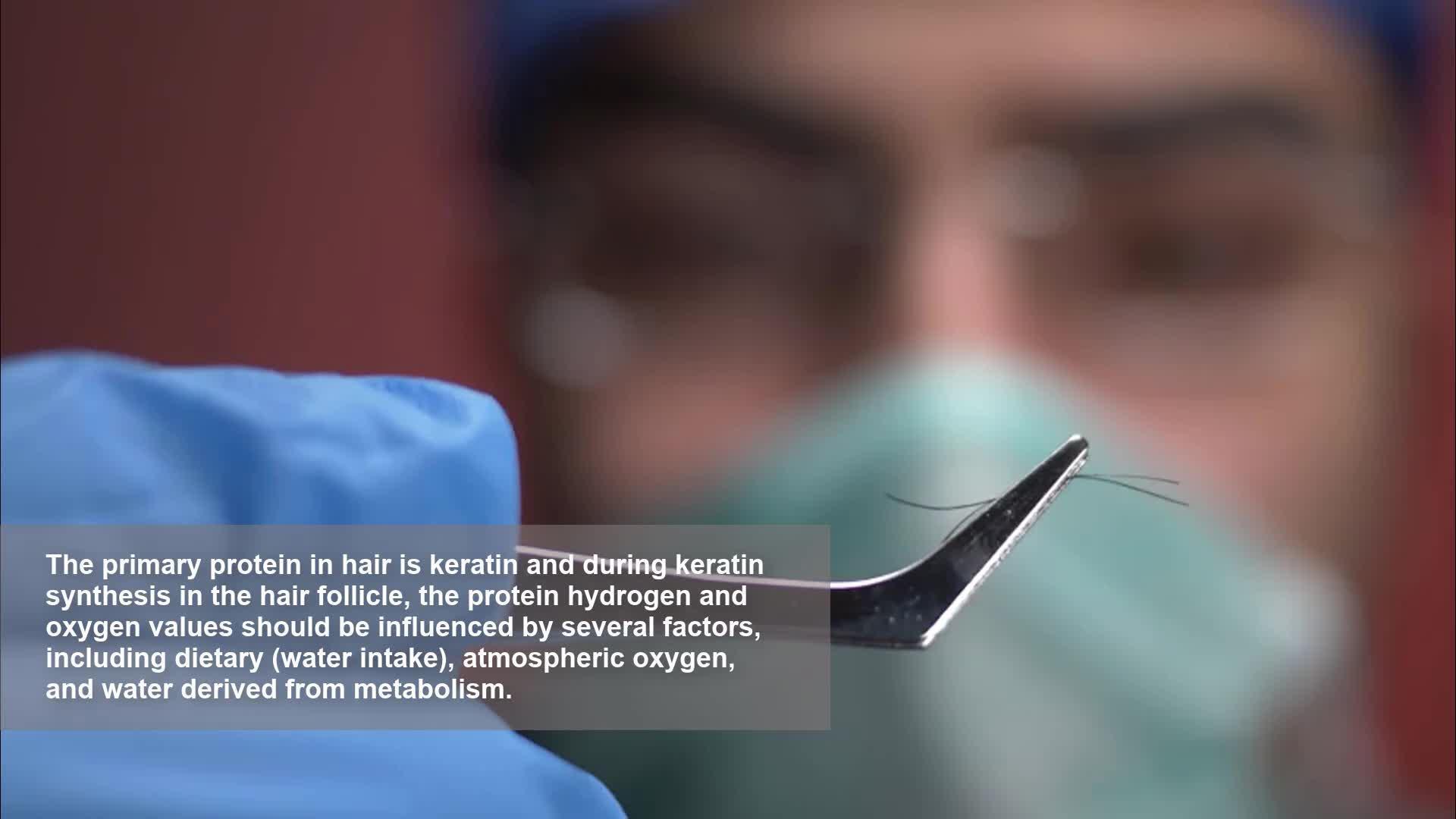Overview
Investigators can track origins, authenticity, and trace identity using the isotopic fingerprints (isotopic signatures) that are left behind in food, fiber, liquid, or stone. Isotope ratio mass spectrometry (IRMS) can help identify the isotopic signatures that provide information about a geographic region, botanical processes, soil, or fertilization processes. Capture the stories hidden in your samples with the Thermo Scientific portfolio of isotope ratio mass spectrometers.
Applications
Isotopic fingerprints help uncover the history of your samples
Samples have unique chemical signatures, or fingerprints, that provide clues to their histories. Isotope ratio mass spectrometry (IRMS) can help visualize these fingerprints.

Food and beverage products have a fingerprint, a unique chemical signature that allows the product to be identified. To visualize this fingerprint, IRMS can be used, identifying the isotope fingerprint of the product. The isotope fingerprint in food and beverage products is region or process specific, which means that products can be differentiated based on geographical region (cheese, coffee, sugar, fish and animal feeding areas), botanical processes (beans, seeds, olive oil, vanilla), soil and fertilization processes (fruits and vegetables) and fraudulent practices (sugar addition to honey, watering of wines and spirits). These processes can be traced using carbon, nitrogen, sulfur, oxygen and hydrogen isotopes, with their variations indicating the origin and history of food and beverage products.
Gas chromatography IRMS
The Thermo Scientific GC IsoLink II IRMS System allows analysis of volatile compounds within a sample.
Liquid chromatography IRMS
The Thermo Scientific LC IsoLink II IRMS System facilitates determination of 13C/12C ratios of polar compounds within a sample.
Elemental analysis IRMS
Thermo Scientific EA IsoLink IRMS System is ideal for fast analysis of bulk sample material.
GasBench IRMS
Thermo Scientific GasBench Plus System allows on-line isotope and molecular ratio determination of gaseous samples via headspace sampling.

Protecting our environment from contamination is a global challenge, one that requires international focus and collaboration for our air, water and land resources. The natural and synthetic materials in our air, water and on our land have a fingerprint, a unique chemical signature that allows them to be identified and differentiated from one another. A unique chemical signature that allows this differentiation are the stable isotopes within the polluting material and we refer to this as the Isotope Fingerprint. To visualize this fingerprint, IRMS is used. The isotope fingerprint in natural sample materials is region or process specific, which means that samples can be differentiated based on geographical region (particulate matter in air), botanical origin (organic matter origin and movement) and mineralization processes (breakdown of material in nature). These processes can be routinely traced using isotope fingerprints, providing scope for source identification and tracking changes in our environment on timescales from the present day and into the recent and deep past.
Tracing origin of pollution with the Isotope Hunter
Tracing pollution sources in air with isotope fingerprints
Elemental analysis IRMS
The EA IsoLink IRMS System is used for analysis of bulk sample material for source identification of pollution.
Gas chromatography IRMS
The GC IsoLink II IRMS System is used for analysis of volatile compounds within a sample for tracing pollutants in soil and sediments.
Neoma MC-ICP-MS
The 1013 Ω Amplifier Technology extends the operating range of the high precision Faraday cup detectors to small ion beams, ideal for low analyte abundance common in environmental samples.
Element XR HR-ICP-MS
A large dynamic range coupled with high sensitivity allows the Thermo Scientific Element XR HR-ICP-MS to analyze environmental samples from trace contaminants to matrix elements.

Forensic investigations examine sample materials to determine how similar or different they are, or to identify the origin of the material. Identifying the difference in a material or where it comes from can be achieved because materials have a unique chemical signature, like a fingerprint. To visualize this fingerprint, IRMS is used, measuring the stable isotopes of sample material that are essentially chemically identical. Unlike other types of inferential evidence in forensic investigations (e.g., bite marks, impression marks from tires or footwear, handwriting), isotope measurements are quantitative empirical evidence that are reproducible and easy to validate. The application of isotope fingerprints to forensic investigations has become more commonplace because there is a need for a rigorous scientific foundation underpinned by sound analytical techniques. Application areas include forensic investigations on human, criminal, environmental, ecological, food and archaeological materials.
Gas chromatography IRMS
Combining the separation power of GC with IRMS allows addressing emerging threats in drug abuse by the GC IsoLink II IRMS System.
Liquid chromatography IRMS
The Thermo Scientific LC IsoLink IRMS System allows archaeological and paleodietary investigations by amino acids isotope ratio analysis.
Elemental analysis IRMS
Analysis of bulk sample using the EA IsoLink IRMS System is frequently used in origin studies, arson, and for investigating human provenance and narcotics.
GasBench IRMS
The GasBench Plus System is used for analysis of gaseous samples via headspace sampling for addressing beverage and environmental forensic applications.

As oil exploration is expensive, petroleum companies use multiple criteria for source identification, such as chemical and isotope fingerprinting, to meet decision on exploitation activities. Identification of sources can be achieved because petrochemical materials, just like other natural and synthetic materials, carry a unique chemical signature and we refer to this as the isotope fingerprint.
To visualize this fingerprint, IRMS is used. Application of isotope fingerprints in exploration and exploitation industry allows for differentiation of gas sources, migration, reservoir characterization, but also assessment of maturation and biodegradation processes. Isotope fingerprints of carbon, nitrogen, sulfur, oxygen and hydrogen are also used to address the influence of petrochemical exploration on environment.
Elemental analysis IRMS
The EA IsoLink IRMS System allows for preliminary assessment between oils and their suspected source rocks by using bulk elemental analysis.
Gas chromatography IRMS
Analysis of individual compounds of crude oils, source rock extracts and natural gas are addressed by the GC IsoLink IRMS System.
Ultra HR-IRMS
The ultra high mass resolution of the Thermo Scientific Ultra HR-IRMS allows for peak separation of clumped isotopes in hydrocarbons.

Neoma MC-ICP-MS
Plasma ionization reduces the number of interferences and the high mass resolution can easily differentiate 32S+ from the 18O16O+. This allows robust analysis of sulfur isotopes in individual organic compounds.

Nuclear applications, like nuclear safeguards, environmental control and nuclear fuel processing to generate nuclear energy, undergo very stringent regulations, requiring precise and accurate isotope analysis of uranium and other actinide elements. Nuclear safeguards and environmental control require ultimate detection systems to be able to find uranium and actinide isotopic signatures in very small samples like tissues. For nuclear power plants, it is crucial to use the correct amount and mixture of nuclear fuels for the nuclear fission process and as such requires precise and accurate 235U and 239Pu isotope information of the feed and product material.
Thermo Scientific isotope ratio mass spectrometers are ideally equipped for nuclear applications. The RPQ energy filter reduces the tailing of major isotopes onto neighboring minor isotopes, allowing extreme isotope ratios to be accurately determined. A tailored nuclear Multi Ion Counting package allows low abundance 234U and 236U to be determined at a fg level.
Neoma MC-ICP-MS
RPQ lenses for simultaneous measurement of 234U and 236U coupled with dedicated nuclear multi-ion counting packages make the Neoma MC-ICP-MS the workhorse for high-throughput nuclear analyses.
Triton XT TIMS
The Thermo Scientific Triton XT TIMS has the best abundance sensitivity and highest precision of the IRMS portfolio. Total evaporation analyses minimizes fractionation effects producing accurate and high precision isotope ratios.

Contamination control is critical in the semiconductor and high purity metal industries. In particular, inorganic impurities affect the electrical properties of the insulating and conducting layers from which semiconductor devices are made. Similarly, high purity metals such as copper, are important precursor materials for the synthesis of advanced materials, including compound semiconductors used in solar cells and superconducting ceramics. Trace element contamination can therefore reduce the manufacturing yield and operational reliability of semiconductor devices. To minimize contamination, process chemicals and the metal end product must be monitored for ultratrace (ng/L; ppt) levels of elemental impurities.
Trace elemental analysis can be achieved using a number of instruments in the Thermo Scientific isotope ratio mass spectrometer portfolio. These high sensitivity instruments are designed to have low detection limits ideal to monitoring ultratrace levels of elemental impurities whilst still maintaining a high sample through-put.
Element XR HR-ICP-MS
Exceptionally high sensitivity and large dynamic range makes the Thermo Scientific Element XR HR-ICP-MS the workhorse for trace and matrix element determination for semicon applications.
Element GD Plus GD-MS
The high mass resolution and outstanding sensitivity is coupled with a unique source design to allow for analysis of solid samples. This makes it ideally suited for ultratrace elemental determination of high purity metals and alloys.

Isotope ratio mass spectrometers can also be used for battery research. One main problem of the lithium ion battery is the aging over time, and its loss of performance. Most of the aging parts in the electrolyte are organic based compounds. Coupling High Resolution ICP-MS to chromatography systems allows researchers to quantify unknown reaction products occurring as a result of aging within the electrolyte. Depth profiling techniques using Glow Discharge MS can be used to determine lithium migration into different cell components as the battery ages.
Element XR HR-ICP-MS
The high mass resolution allows researchers to analyze nearly all elements in the periodic table (including phosphorous) without the use of reaction gases. Coupling to chromatography systems enables online separation and elemental analysis.
Element GD Plus GD-MS
Depth profiling of ultratrace to matrix elements can be achieved with nanometer depth resolution. Fast flow and wide dynamic range of the Element GD Plus GD-MS offers the best sensitivity and lowest limits of detections.
Neoma MC-ICP-MS
The enhanced variable multicollector detector array ensures the flexibility to cover isotopic applications from Li through to U in low or high resolution without compromising the native dispersion of the mass analyzer. This allows for isotopic characterization of battery materials across a wide range of isotope systems.
Isotope fingerprints e-learning

Become an Isotope Hunter with this e-learning series
This e-learning module will introduce you to isotope fingerprints and how they are used to find answers to sample origin and authenticity. You will learn:
- What are isotope fingerprints?
- How can we detect an isotope fingerprint?
- Where can isotope fingerprints be applied?
- What are examples of applications of isotope fingerprints for food integrity, environmental forensics, criminal forensics, doping control, etc.

Isotope fingerprints compendia
Are you performing origin analysis? In the compendia you will get an introduction to how isotope fingerprints are used for origin and authenticity for food integrity applications and forensic investigations.
Contact us
* Required field


























